Here are the best Indoor Plants that Reduce Respiratory Problems and make you breathe healthier. They are easy grow and have a high purifying rate!
There is an all-time rise in breathing issues and the simple solution lies in the power of mother nature. Have a look at the best Indoor Plants that Reduce Respiratory Problems.
Check out the best bedroom plants for clean air here
Indoor Plants that Reduce Respiratory Problems
According to the American Society for Horticulture Science, plants also result in shorter hospitalizations, fewer intakes of analgesics, lower ratings of pain, anxiety, and fatigue, and more positive feelings and higher satisfaction about their rooms.
1. Spider Plant
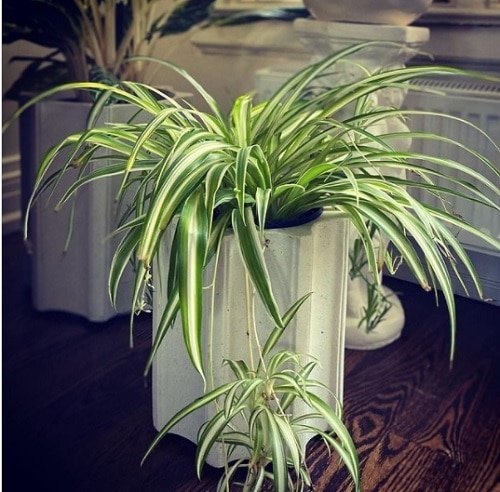
Botanical Name: Chlorophytum comosum
Spider plants improve indoor air quality as they produce more chlorophyll compared to any other houseplant, which implies more oxygen. This plant is also a part of the NASA Clean Air Study and quite efficient in eliminating formaldehyde, xylene, toluene, and carbon monoxide.
According to former NASA research scientist Bill Wolverton, spider plants can remove more than 95 percent of toxic agents that can cause anemia, heart diseases, and respiratory problems.
Here’s all you need to know about growing spider plants indoors
2. Peace Lily
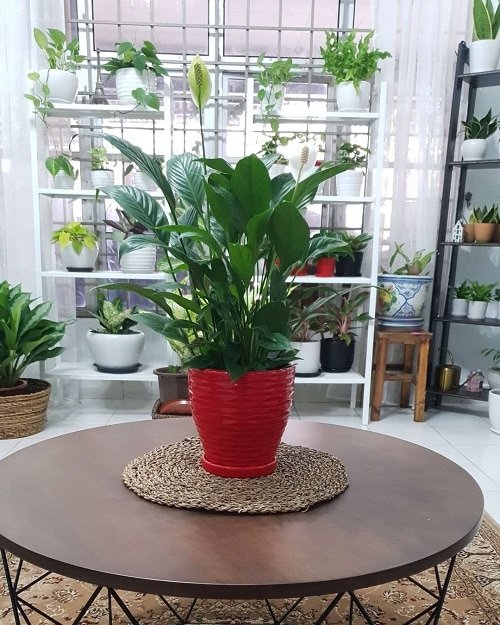
Botanical Name: Spathiphyllum wallisii
The peace lily is an excellent houseplant that can reduce the risk of many respiratory problems. According to this Japanese study, the peace lily is equally effective as golden pothos in absorbing VOC’s. It also absorbs acetone that can lead to slurred speech, low blood pressure, and lethargy.
Have a look at the benefits of growing peace lily here
3. Snake Plant
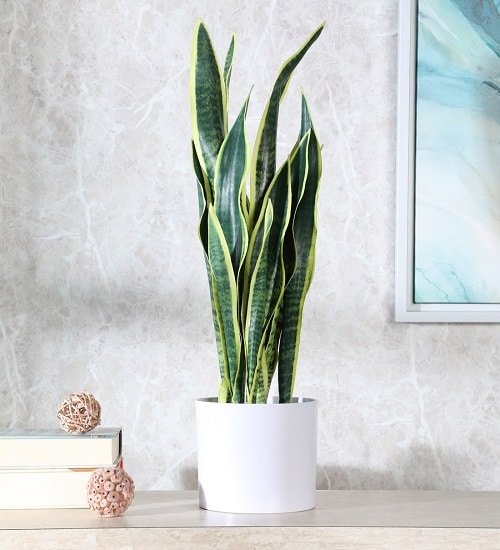
Botanical Name: Sansevieria trifasciata
According to this study, the snake plant is one of the most oxygen-producing houseplants. This CAM plant not only absorbs CO2 but also removes formaldehyde, benzene, toluene, and xylene from the air that can cause throat and nose irritation.
Check out our article on growing snake plant here
4. Areca Palm

Botanical Name: Dypsis lutescens
Areca palm is known for its air-purifying properties and also a perfect choice for people suffering from respiratory ailments like sinusitis, bronchitis, and asthma because it has the highest transpiration rate (10). A healthy 5-6 feet tall plant releases up to 1 quart (946.35 ml) of water vapor in the air every 24 hours.
Here’s all you need to know about growing areca palm indoors
5. Pothos
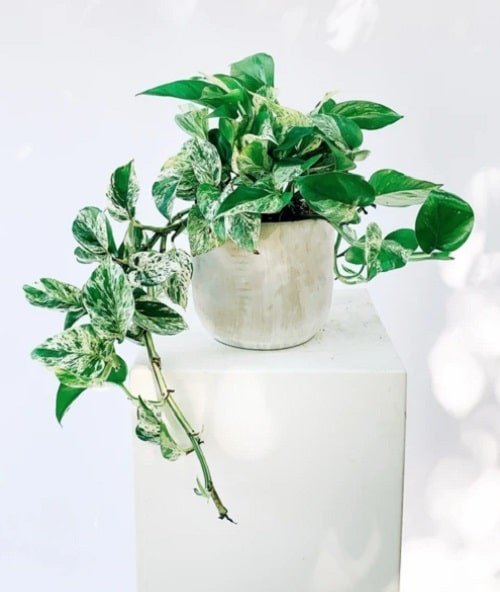
Botanical Name: Epipremnum aureum
It’s a great houseplant for purifying indoor air and also has a direct impact on the respiratory system. According to a Malaysian study and this research on pothos, spider plant, and snake plant, they summarize that these plants can absorb ozone that impairs lung functions.
Have a look at the science-backed benefits of growing pothos here
6. Aloe Vera
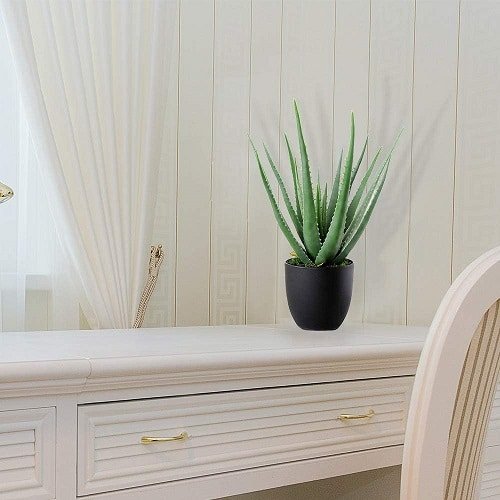
Botanical Name: Aloe barbadensis miller
Aloe vera has many medicinal, beauty, and skincare properties. It also helps in boosting the body’s immune system and its products have uses for treating asthma conditions. This succulent is also known for removing benzene and formaldehyde from indoor air, released by paints and chemical-based cleaners.
Check out some amazing benefits of growing Aloe vera plants here
7. English Ivy

Botanical Name: Hedera helix
You can reduce the risk of respiratory issues by growing hedera helix indoors. According to the University of Sydney, Australia, English ivy extracts are potent against inflammation and have antiallergic and antispasmodic properties. It can reduce cough and useful in allergies, asthma, and bronchitis.
Have a look at the benefits of growing English Ivy here
8. Rubber Plant
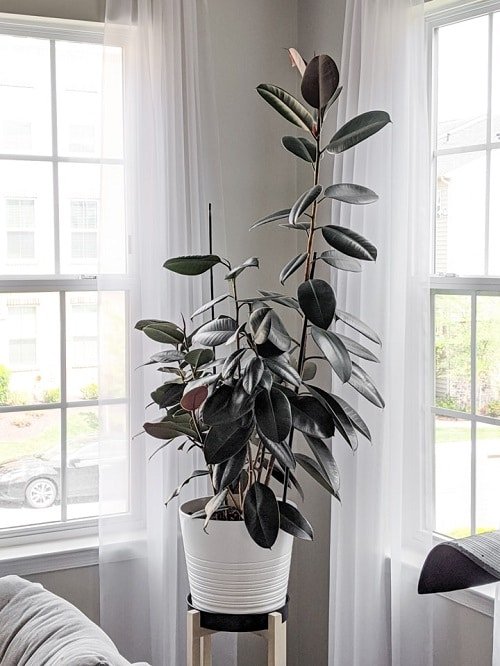
Botanical Name: Ficus elastica
This air-purifying plant is a part of the NASA Clean Air Study where it was found to be potent in reducing formaldehyde, VOCs, carbon-di-oxide, and carbon monoxide from the surroundings. According to this Indian study, rubber plants are also potent in reducing respiratory problems, lung impairment, and asthma problems.
Air-purifying plants effectively reduce respiratory problems up to 30-36 percent and reduce 10-12 percent lung impairment.
Here are the most amazing benefits of growing rubber plants
9. Dracaena
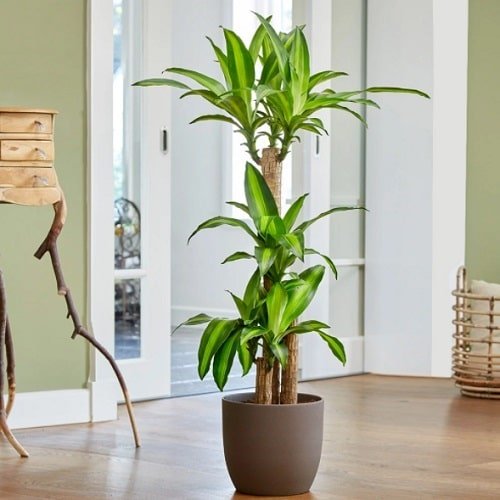
Botanical Name: Dracaena fragrans
Dracaena is excellent in removing harmful air pollutants from the surroundings that can cause serious health problems. It is also a potent plant to cure asthma according to this research. It can also reduce indoor air pollutants like benzene, trichloroethylene, formaldehyde, and carbon dioxide.
Check out our article on the benefits of growing Dracaena here
10. Bamboo Palm
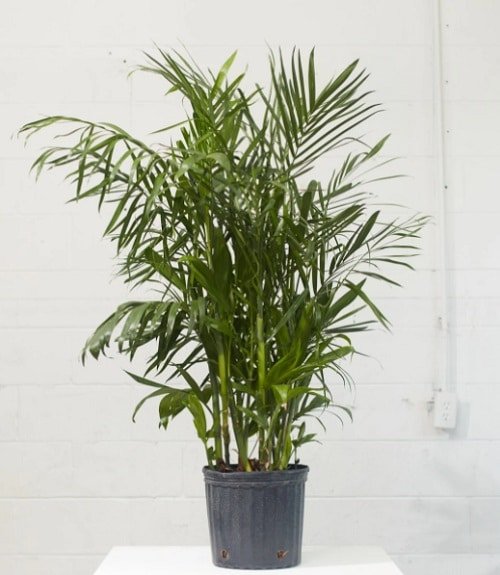
Botanical Name: Chamaedorea seifrizii
In this study at Paharpur Business Center and Software Technology Incubator Park, New Delhi, it was observed that indoor plants such as bamboo palm, Rhapis palm, and Ficus Alii absorb CO2, VOCs, and inorganic gas from the surroundings, which have a direct and indirect impact on the respiratory problems.
Bamboo palm also makes the air fresh by sweeping away toxins and dispelling dryness, which is good for the lungs.





